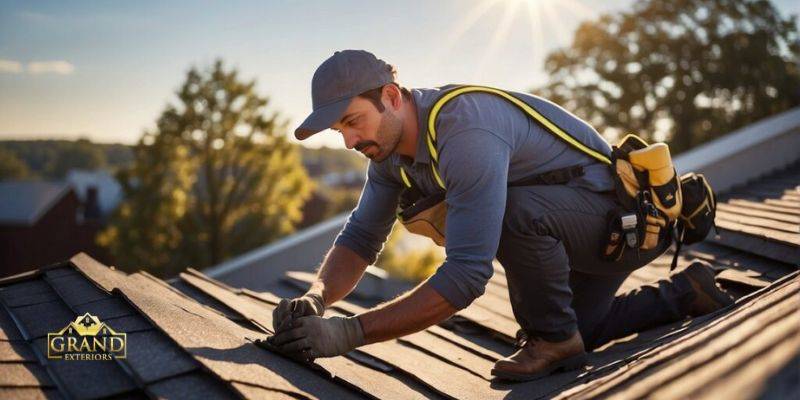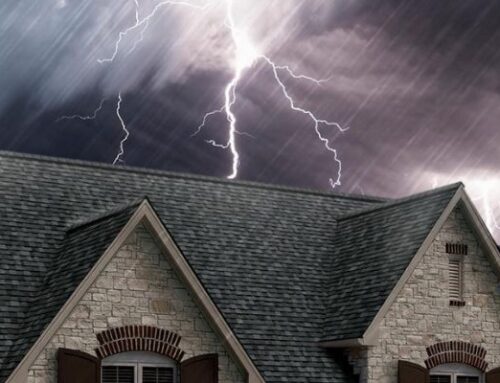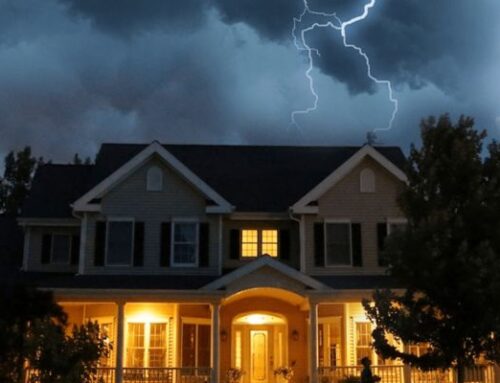As the summer months approach, many regions brace themselves for the arrival of severe storms, heavy rains, and strong winds. While these natural events can be unpredictable and damaging, taking proactive steps to maintain your roof can go a long way in minimizing potential issues and protecting your home or building.
Summer storms can put a significant strain on your roof, subjecting it to harsh elements like high winds, hail, and torrential downpours. Neglecting routine maintenance during this season can lead to costly repairs, water damage, and even structural compromise. That’s why it’s crucial to prioritize roof maintenance tasks to ensure your roof remains in top condition and can withstand the onslaught of summer weather.
In this blog post, we’ll explore essential roof maintenance tasks that every homeowner or property manager should undertake in preparation for the summer storm season. From inspecting for signs of wear and tear to cleaning gutters and trimming overhanging branches, we’ll cover a comprehensive checklist to help you safeguard your roof and ensure it continues to provide reliable protection for years to come.
Staying ahead of potential issues and addressing them promptly can save you from expensive repairs and headaches down the line. By investing time and effort into proper roof maintenance, you’ll not only extend the lifespan of your roof but also ensure the safety and well-being of your family or occupants during the unpredictable summer storm season.
Inspect for Damaged or Missing Shingles: Severe storms can cause shingles to become loose, cracked, or completely dislodged. Inspect your roof thoroughly for any signs of damage, paying close attention to areas around vents, chimneys, and valleys where shingles are more prone to wear. Replace any missing or severely damaged shingles promptly to prevent water infiltration and further damage.
Check for Roof Leaks Water: leaks can lead to serious structural damage and mold growth if left unaddressed. Inspect the attic and interior ceilings for any signs of water stains, discoloration, or dampness, which may indicate a leak. Use a flashlight to thoroughly examine the underside of the roof deck for any visible moisture or daylight penetration.
Clean Gutters and Downspouts: Clogged gutters and downspouts can cause water to back up and potentially seep under shingles or cause damage to the roof’s fascia and soffit areas. Remove any debris, such as leaves, twigs, and dirt, from the gutters and ensure that downspouts are properly directing water away from the foundation.
Trim Overhanging Branches: Strong winds during summer storms can cause overhanging branches to rub against the roof or even break off, potentially causing significant damage. Trim any branches that are within 6 feet of the roof to prevent this hazard and ensure they don’t accumulate debris on the roof.
Inspect Flashing: Flashing is the metal material used to seal the intersections between the roof and any projections, such as chimneys, vents, or skylights. Inspect the flashing for any signs of cracking, loosening, or rust, and repair or replace as necessary to prevent water infiltration.
Check Roof Ventilation: Proper ventilation is crucial for preventing moisture buildup and extending the lifespan of your roof. Ensure that all vents, including ridge vents, soffit vents, and gable vents, are clear of debris and functioning correctly to allow adequate airflow.
Secure Loose Shingles or Tiles: High winds can cause shingles or tiles to become loose or partially detached. Secure any loose shingles or tiles by applying an appropriate sealant or replacing them if necessary. This will prevent them from being dislodged during storms and causing further damage.
Inspect the Roof Deck: If you have access to the roof deck (the structural base beneath the shingles or tiles), inspect it for any signs of deterioration, rot, or sagging. These issues can compromise the integrity of the roof and should be addressed by a professional roofer.
Check for Moss or Algae Growth: Moss and algae can grow on roofs in damp or shaded areas, causing shingles to deteriorate and potentially leading to leaks. Use a roof-safe moss and algae remover solution to eliminate any growth and prevent further damage.
Consider Roof Maintenance Services: If you’re uncomfortable performing roof inspections or maintenance tasks yourself, consider hiring a professional roofing contractor to provide a comprehensive roof inspection and maintenance service. They have the expertise and equipment to identify and address potential issues before they become major problems.
Conclusion
By following the essential roof maintenance tasks outlined in this blog post, you’ll be well-equipped to tackle the challenges posed by severe summer storms. From inspecting for damaged shingles and leaks to cleaning gutters and trimming overhanging branches, these steps will help ensure your roof remains in prime condition and can withstand the onslaught of high winds, heavy rains, and hail.
Remember, a well-maintained roof not only protects your property but also provides peace of mind, knowing that you’ve taken the necessary precautions to safeguard your investment and the safety of your family or occupants.
If you’re uncomfortable performing these tasks yourself or encounter any significant issues, don’t hesitate to seek professional assistance. Roofing contractors have the expertise and equipment to identify and address potential problems before they escalate into major concerns.
Investing time and effort into proper roof maintenance may seem like an additional chore, but the benefits far outweigh the effort. By staying ahead of potential issues and addressing them promptly, you’ll extend the lifespan of your roof, minimize costly repairs, and ensure your property remains protected during the unpredictable summer storm season.




